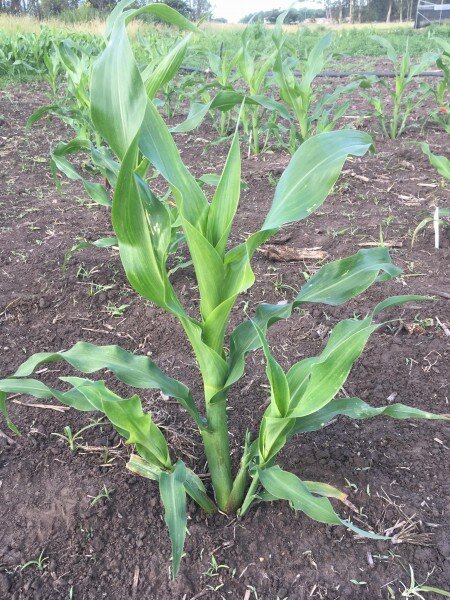#Corn plants with tillers work well in restrictive environments

Table of Contents
“Corn plants with tillers work well in restrictive environments”

Undeniably, corn is one of the world’s most important crops. From feeding humans and livestock, to its many industrial uses, humans have been growing it for approximately 10,000 years.
Traditionally, corn was grown in the most productive regions in the world. These regions have healthy soils, adequate rainfall, and more. Think of places like the American Midwest where you can find a corn-related college mascot. In recent years, the production of corn has grown to less fruitful areas around the world with the development of new corn hybrids and improved farming practices.
A common farming practice in less productive regions is increasing the space between the corn plants in the row. The space between plants is called plant density. With lowered plant density, there is less competition between the corn for water, nutrients, and other resources needed. However, greater access to nutrients can cause the corn to grow an additional component: tillers.
Did you know that corn is technically a member of the grass family? Like other grasses, corn can grow tillers, a branching structure naturally found at the base of a corn plant. Tillers require nutrients to grow. As a result, they can be seen as a nuisance by stealing nutrients from the most important part of the plant: the main ear of corn. Understanding how tillers affect corn yields in less productive regions is crucial.
Ignacio Massigoge, a researcher at National University of Mar del Plata, and his team study corn and tillers in the Pampas of Argentina. “Research that can help stabilize and maximize corn yield will have a significant impact in these restrictive environments,” says Massigoge. His team’s study was recently published in Crop Science.
“This study aimed to assess the role of tillers on corn planted at a lower density,” Massigoge states. How does the presence of tillers impact corn yield in varied environments in the Pampas? What are the relationships between tillers, environment, and corn yield? These were all questions the team worked to answer.
The researchers set up 11 field experiments during two years in the southern Argentinian Pampas. Researchers collected data from corn with and without tillers at 11 locations with varying sunlight, rainfall, and temperatures. For the corn being studied without tillers, the researchers had to remove the tillers by hand.
Data such as plant density, ears of corn per plant, tillers per plant, and corn yield were collected and evaluated. Gathering this data led to some exciting results: In a wide range of environments, tillers either maintained or increased corn yield compared to corn without tillers.
“The advantages of corn with tillers compared to the corn without tillers were evident across a wide variety of environments. Remarkably, tillers did not promote negative effects on overall corn yield even in the most restrictive environments evaluated,” says Massigoge. “Farmers and producers in restrictive environments can use these findings to understand the effects of tillers on corn planted at a lower density.”
Lower planting density is beneficial in restrictive environments like the Pampas region. Reducing plant density decreases water use and increases water availability, so one of the main challenges for corn under these conditions is to maximize the use of resources. This study proved that tillers could help maximize the corn’s use of its resources and adapt to the environment, when environmental conditions are better than expected.
This research is important to Massigoge and his team. “Historically, most of the research on corn crops has focused on high-yielding environments. Recommendations for less productive regions are less advanced, so applied research that can help to stabilize and/or maximize corn yield will cause a significant impact on production.”
According to Massigoge, research on corn tillering is scarce, possibly because traditional high plant densities common in fruitful environments do not allow the corn to develop tillers. “This new knowledge can aid the development of decision support tools for farmers in more restrictive environments.”
Sweet corn yield gain over 80 years leaves room for improvement, according to study
Ignacio Massigoge et al, Contribution of tillers to maize yield stability at low plant density, Crop Science (2022). DOI: 10.1002/csc2.20827
Citation:
Corn plants with tillers work well in restrictive environments (2022, October 12)
retrieved 12 October 2022
from https://phys.org/news/2022-10-corn-tillers-restrictive-environments.html
This document is subject to copyright. Apart from any fair dealing for the purpose of private study or research, no
part may be reproduced without the written permission. The content is provided for information purposes only.
If you liked the article, do not forget to share it with your friends. Follow us on Google News too, click on the star and choose us from your favorites.
For forums sites go to Forum.BuradaBiliyorum.Com
If you want to read more Like this articles, you can visit our Science category.


